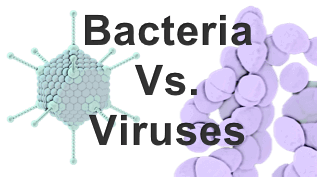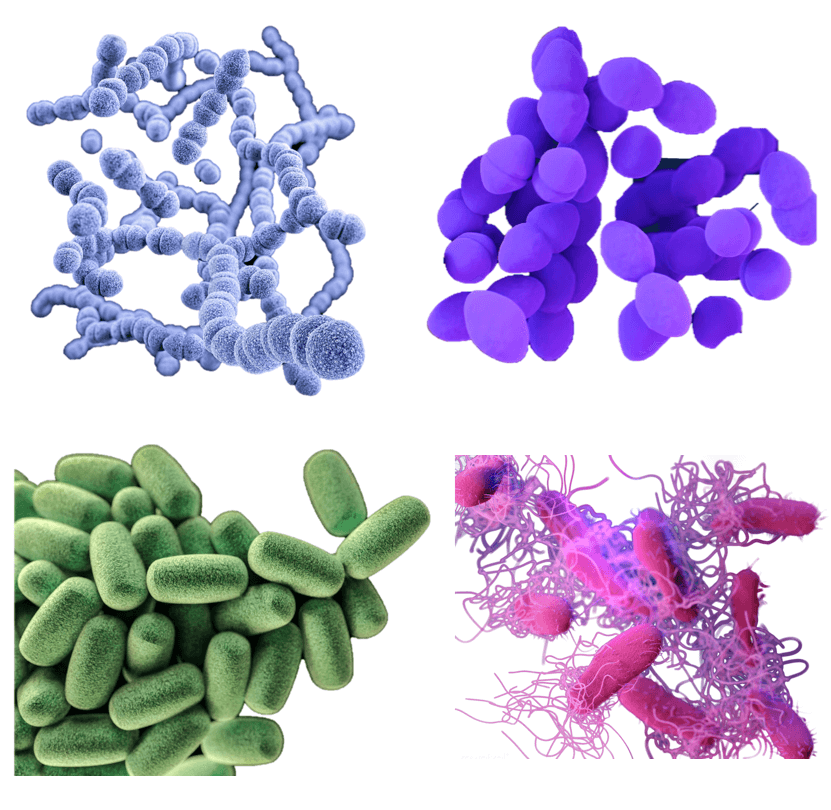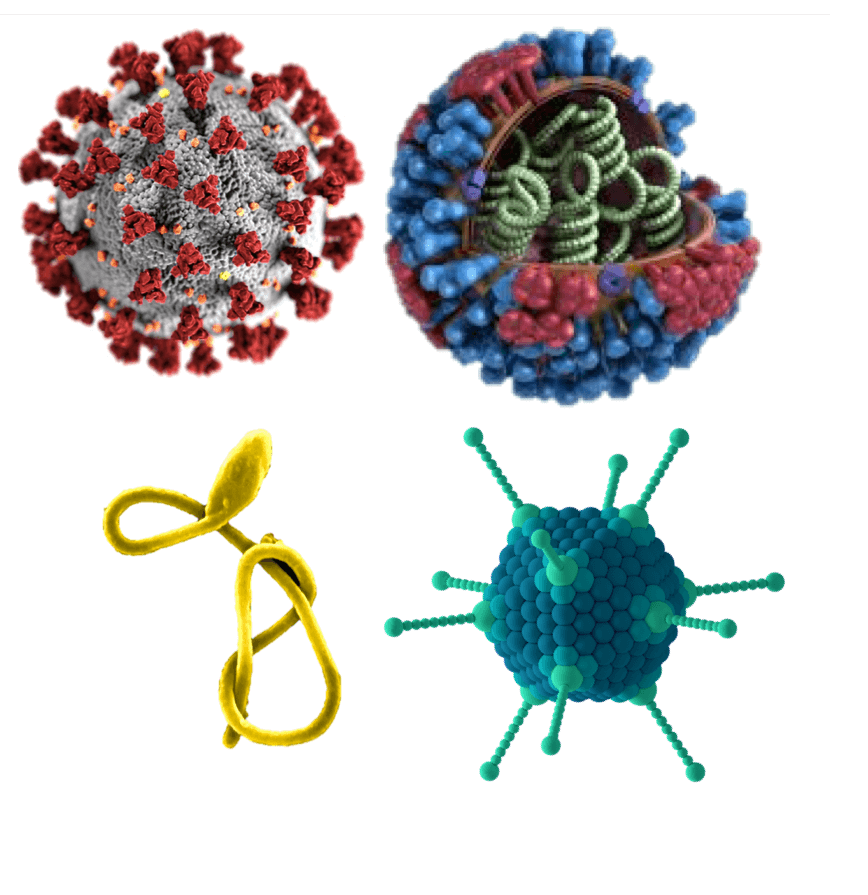Bacteria vs. Viruses

Bacteria Vs. Viruses (or simply Germs?)
“Germs” (Latin germen, meaning ‘seed’ or ‘sprout’) is a common term that includes bacteria, viruses, and other microscopic particles (fungi, and protozoa) that cause illness in humans. This term is however not widely used in formal science these days.
Bacteria (bak·teeuh·ree·uh) and viruses (vai·ruh·suhz) are found almost everywhere and anywhere. You can find them in soil, water, air, your clothes, house and inside your body too. They are present in the depths of the oceans as well as on the top of the mountains. You can find them in the extreme of the extreme conditions on the planet where you would expect no life to exist (check ‘what are extremophiles?’). They can infect plants, animals, and people, but don’t necessarily make us sick every time.
Feature/Character | Bacteria | Virus |
How do they look? You’ll need a microscope though since they are microscopic |  |  |
How many cells do they have? (humans have on an average ~37 trillion cells) | Single-celled | No cell |
Size (Human: 175 cm) | 0.3 - 2 μ (0.00003 - 0.0002 cm) | 0.02 - 0.3 μ (0.000002 - 0.00003 cm) The largest virus is still smaller than the smallest bacterium |
| Cell type (humans are eukaryotic) | Prokaryotic | Acellular (no cellular organelles, cannot grow or divide or carry out independent metabolism) |
Made of? | Organelles and genetic material within a cell wall | Genetic material within protein capsule (some have an envelope too) |
Genetic material | DNA and RNA | DNA or RNA |
Living attributes | Living | Between living and non-living things |
Need for host | Can replicate without host too | Need a living cell to replicate |
Where do they survive | Anywhere and everywhere (Outside/inside body) | Host needed (only reproduce by attaching themselves to cells) |
Cellular machinery (ribosome, etc) | Present | Absent |
Type of organism | Mostly intercellular (live between cells); some intracellular | Intracellular (live inside the cell) |
Harmful? | Most are harmless. Some are beneficial while some are disease-causing (pathogenic) | Most are harmful |
Infections | Food poisoning, gastritis, ulcers, pneumonia, etc | Common cold, influenza, chickenpox, AIDS etc |
Treatment | Antibiotics | Antiviral drugs |
Benefits | Some bacteria are beneficial (as normal flora, probiotics, fermenters, etc.) | Viruses are not beneficial. (can be useful in genetic engineering) |
Examples | Escherichia coli, Salmonella, Mycobacteria, Staphylococcus species | Coronavirus, Ebola virus, SARS, HIV, Hepatitis A virus |
Remember: Antibiotics are meant to fight bacteria but not viruses. That’s why your doctor will not prescribe antibiotics for flu or common cold.
Here are some video links if you are interested in knowing about:
Where do new viruses come from: https://www.youtube.com/watch?v=NJLXdsO1GBI
Viruses and Bacteria: What's the difference and who cares anyway? - Plain and Simple: https://www.youtube.com/watch?v=O7iaPos8a90
- By Venkata Krishnan